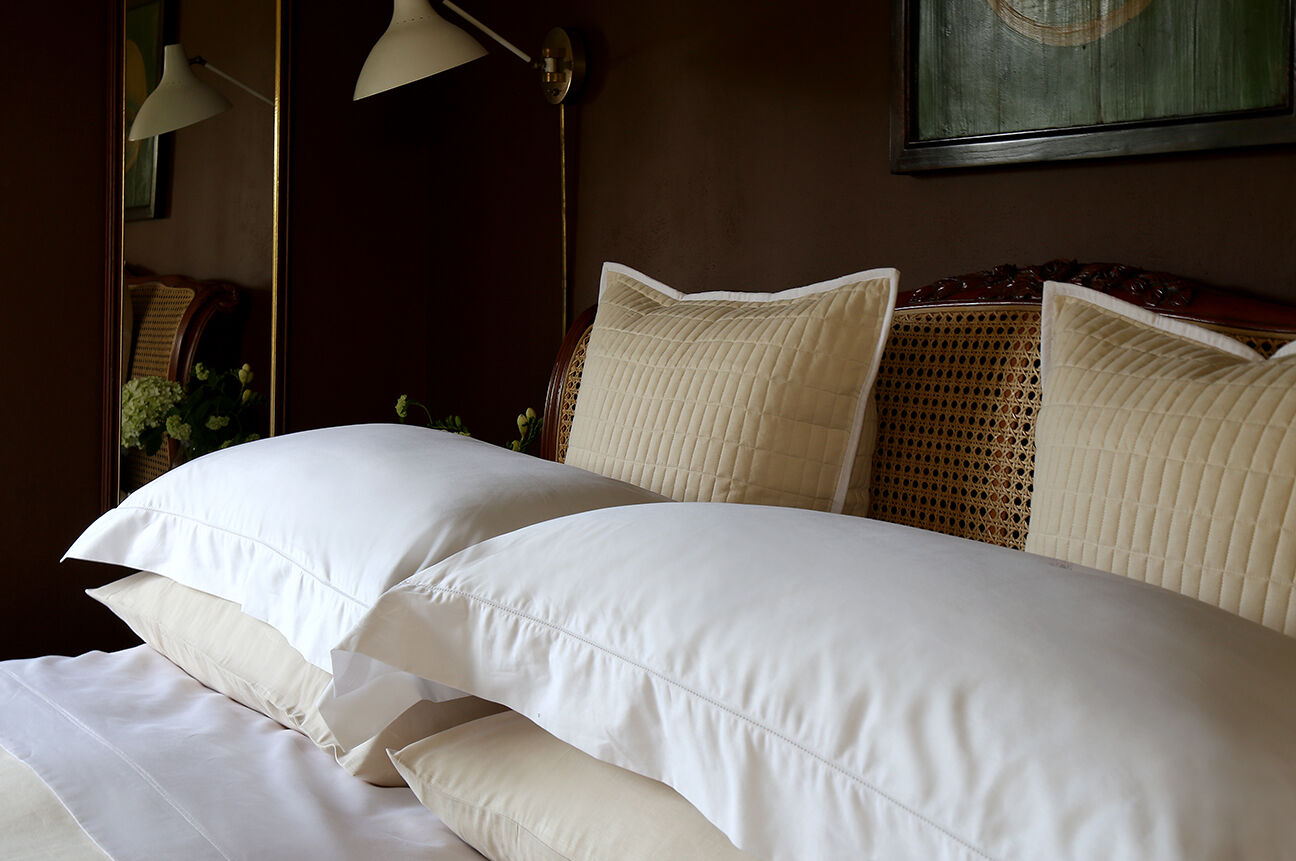This remained the case for a few years until several Italian companies started to use innovative weaving constructions as a method of increasing their stated thread counts even further in their desire to jump ahead in the “thread count race”. By introducing the use of two and multi-ply twisted yarns in both the warp and weft directions, these ingenious manufacturers were able to double, treble and even quadruple their stated thread counts at a stroke. Cloths with counts as high as 1800 were being sold in the market by the early 2000’s.
Even though these new high thread count fabrics technically did comprise over a thousand individual threads per square inch, the number of woven intersections in these cloths was often less than used in the original 180 thread count polyester cotton percale sheets which were responsible for the thread count race. The Fabric Discovery Center (founded in 2018) in Massachusetts defines thread count as being the number of single yarns in a given area of woven cloth – which hence precludes and discredits fabrics with a count of more than about four hundred unless these are made from strong mono filament fibres like silk or wire.
A more reliable measure of fabric suitability and quality is that of “Cover Factor”. This measure is simpler than thread count, less arbitrary and can be compared between cloths of varying fibres and compositions. Cover Factor is defined as “A number that indicates the extent to which the area of a fabric is covered by one set of thread.”
For Reed Family Linen’s best selling 400TC single yarn percale the Cover Factor is 25.5 – about 16% higher than a standard plain weave construction out of a maximum theoretical value of 28.0, compared to our sateens and jacquards which have factors of less than 20.0. The Cover Factor for our most popular 400TC Percale sheeting is 91% of the theoretical maximum achievable value which we believe is amongst the highest available on the market today and which represents a more transparent measure of quality than thread count.
Long standing Reed Family Linen clients will know that as a company we have only ever sold and promoted cloths with thread counts of at most 400 per square inch. We also know from our long experience of over a century and a half in the weaving industry that a 400TC single yarn percale sheeting cloth offers the best value for money for the consumer in terms of purchase price and durability.
So how does today’s consumer differentiate between the huge choice of bedlinen products which they see on retailer’s shelves? If they can’t rely on thread count to tell them apart, then how can they make their choice between brand A and brand B? The answer unfortunately is that there is no straight forward way for the average consumer to compare different manufacturer’s products in store. The process is complex and the relevant criteria and information are not always available.
But in summary, consumers should look for the following |
- FIBRE – synthetic or natural, long staple or short staple cotton.
- WEAVE – single yarn or multi-ply.
- THREAD COUNT – below 400 or above (if so, then query it)
- COVER FACTOR – always look for values above 21 for plain weaves.
- BRAND – do your research, look at the manufacturer’s website, do they weave and produce their own fabric, are their cloth specifications trustworthy?
- PRICE – like most things, you get what you pay for; a £100 sheet which lasts ten years is better value than a £20 which lasts eighteen months.
We wish you luck in working through this minefield. If you have any questions, then please don’t hesitate to email or DM us.
Happy Shopping,
Mark Reed

